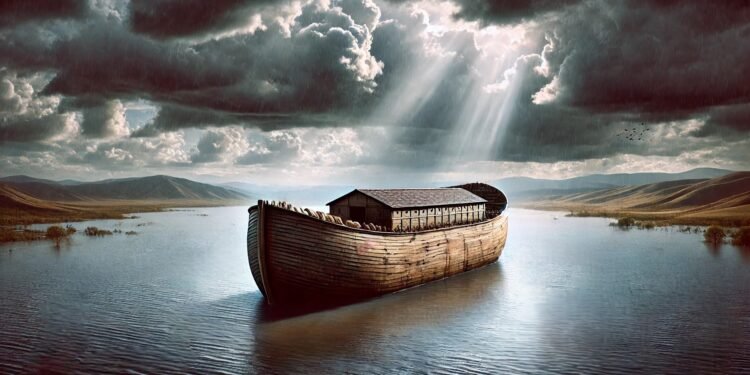According to the book “Forgotten Genesis” by Radu Cinamar, the Biblical Flood—described in the Bible as a global event that submerged the entire Earth—was not a planetary cataclysm, but rather a regional one, which occurred approximately 5,000 years ago. It primarily affected the Middle East and southeastern Europe, areas considered by the people of that time to be “the whole world” due to their limited understanding of the globe and the lack of awareness about other continents.
A Reinterpretation of the Biblical Account
While the Bible presents the Flood as a global deluge, Radu Cinamar emphasizes that this account actually reflects the local perspective of ancient people. For them, the world was limited to the known regions, and the book gives us a few examples such as Cappadocia (the central-southern area of present-day Turkey), Syria, and Israel. These areas were heavily affected by the floodwaters, resulting in a desolate landscape, with endless stretches of water, a few remaining trees, and isolated temples that survived the deluge. Buildings made of clay and stone were fragile and easily destroyed by the force of the water.
Global Flood Traditions
The book also highlights that various cultures around the world have their own flood myths and traditions. These accounts suggest that similar cataclysmic events occurred in different regions and at different times, contradicting the idea of a single, global flood event.
Noah’s Ark: A Simplified Story
Regarding Noah’s Ark, Radu Cinamar asserts that it did exist, but not in the form described in the Bible. The ark was not massive, nor did it house all animal species. Noah and his family took on board only a few pairs of animals—far fewer than the biblical narrative suggests. The tale of saving all animals is presented as a mythologized version of a much more complex scientific process.
The Role of an Extraterrestrial Civilization
According to the book, an extraterrestrial civilization—originating from another star system and regarded as “gods” by ancient humans—played a crucial role in preserving life after the Flood. They created a DNA bank, collecting genetic material from plants and animals in the affected regions. Since the biblical writers could not explain such advanced procedures in scientific terms, they conveyed the story through myth: Noah saving all the animals. The restoration of plant and animal species took several decades, during which humanity was assisted by this advanced civilization.
The book Forgotten Genesis also mentions the existence, at that time, of another type of gods or extraterrestrials with a negative orientation, who had no interest in humanity’s evolution. Their intention was to keep humanity at an almost animalistic level, to hinder its development, and to exploit it. These negative gods or extraterrestrials sought to be served and, at the same time, aimed to take full control over the planet.
Two Categories of Human Beings
The book also mentions the existence of two distinct categories of human beings at the time of the Flood. One group had reached a high level of evolution, while the other, left to the mercy of nature, progressed much more slowly. This contrast explains why certain parts of the Earth were highly advanced, while others were inhabited by people living in caves and organized in primitive tribes. According to the author, modern human civilization reflects the second group—those who evolved with great difficulty.
The Flood: Destruction and Rebirth
The Flood was not a random event, but a necessary step in the context of human evolution. From this perspective, the cataclysm was not just a destructive force—it was also an opportunity for a new beginning. It served as a purge of destructive energies and practices in the region and marked an important evolutionary leap for humanity.









